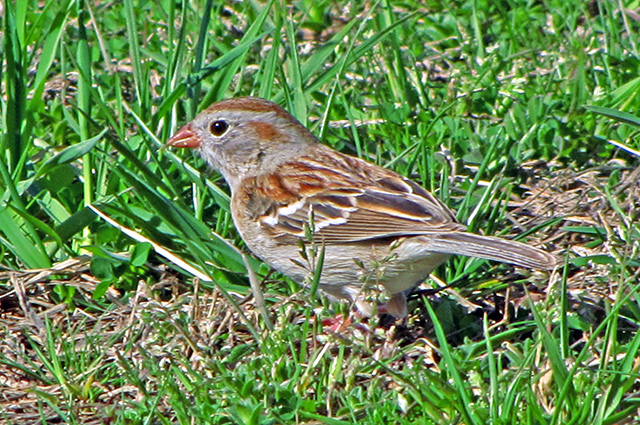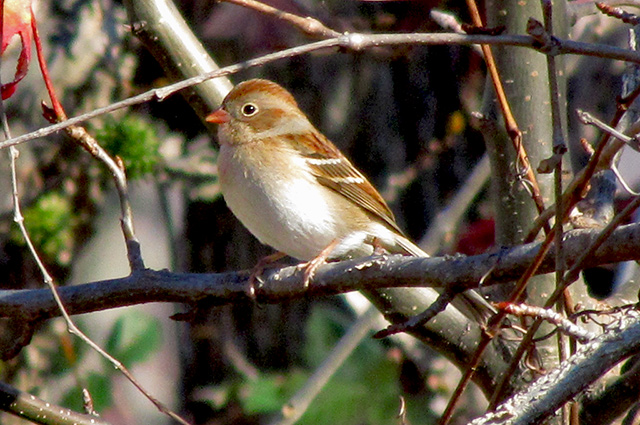|
|
Photos
© Gary Myers ... Text by Ellen Katinas |

Field Sparrow Talk about sending mixed messages! A male Field Sparrow who wants a mate will often fly at and strike a female, even driving her to the ground. Yet the female accepts this. Usually on the day following she can be seen inspecting potential nest sites, while the male follows her attentively and offers the occasional grass stem. Sometimes females have the last laugh. If a pairing occurs late in the breeding season, a male may find himself feeding a baby that isn’t his. Field sparrows are mostly monogamous though. A pair may breed more than once per season, building subsequent nests for each clutch of eggs. Early season nests appear on the ground; as leaves grow, trees are favored as safe from predators. A female Field Sparrow first weaves grass stems together to form a framework, then lines this with a soft cup made of hair, grass, and rootlets. She lays 1 to 5 eggs and may produce 1 to 5 broods (individual families) over a season. Young birds are fed by both parents a diet of butterflies, beetles, flies, and other insects. The birds’ population has dropped in the last 50 years. They are shy of people and will not breed or nest near inhabited areas. Instead, they like abandoned fields and pastures. You may see them at Christmas tree farms or nurseries, but this is as close as they get to humans. They live year round in the southeastern United States but move north, as far as Canada, for their summer breeding. |






